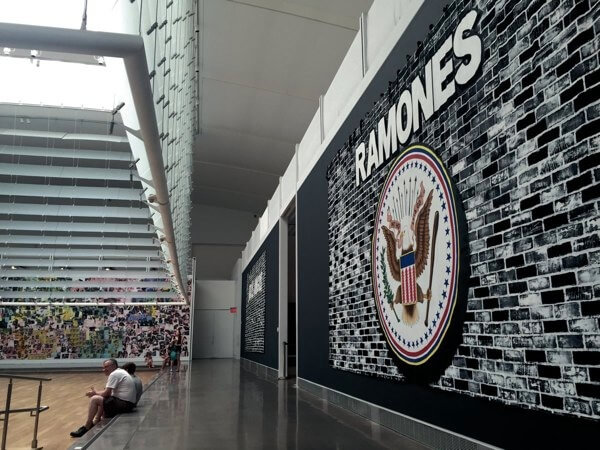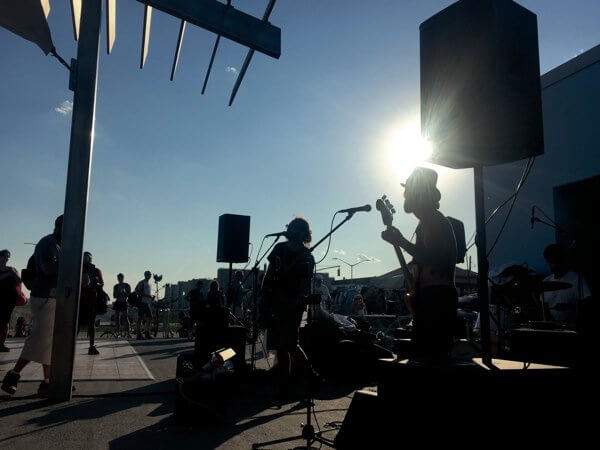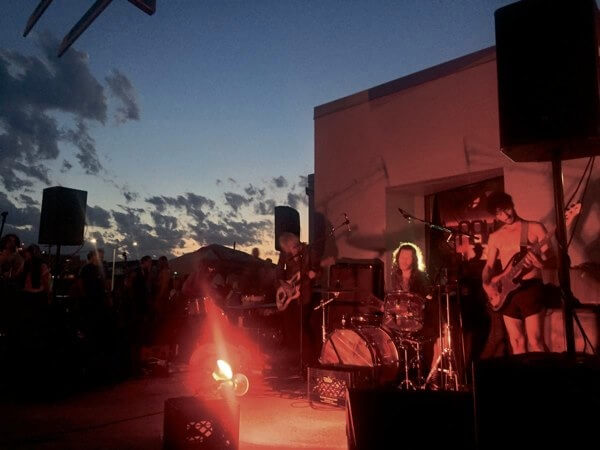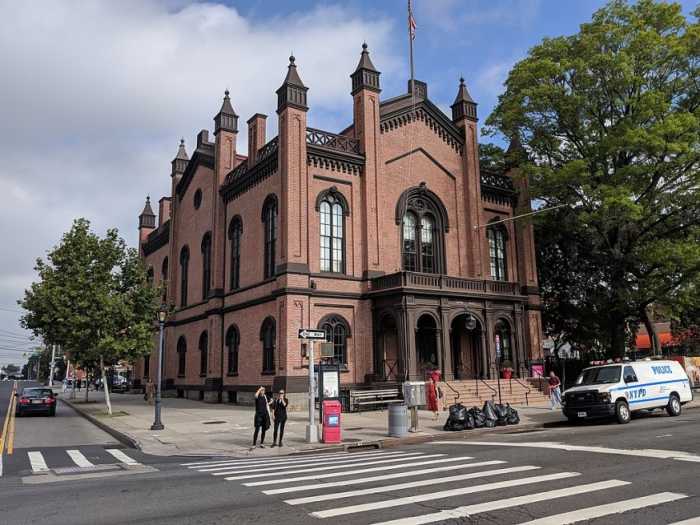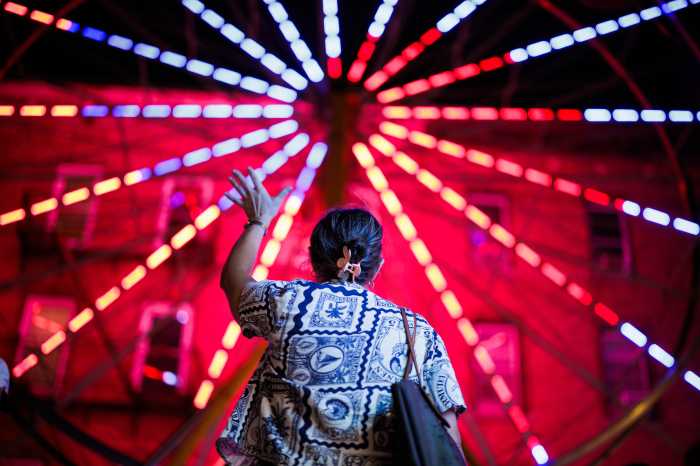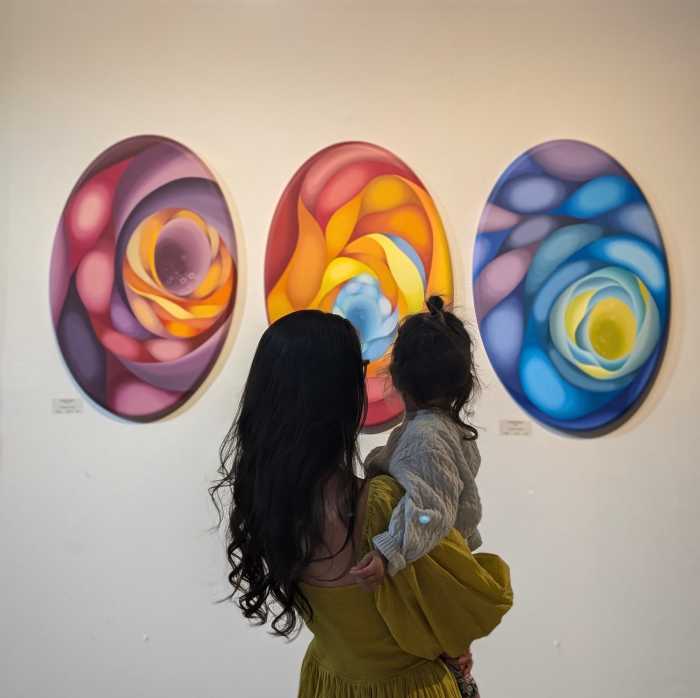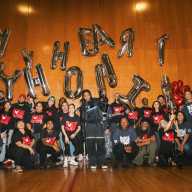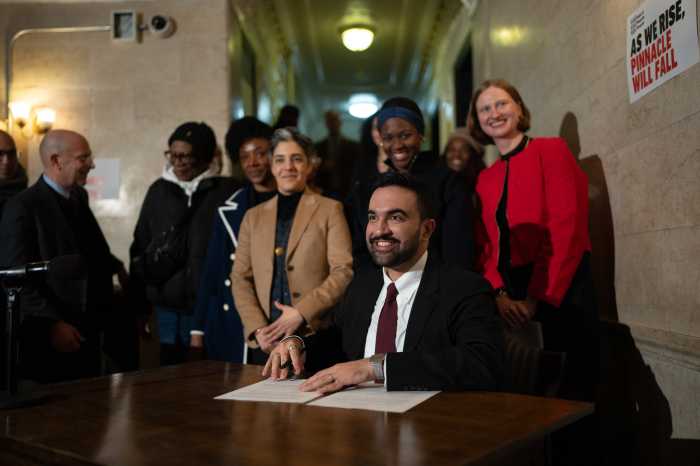By Patrick Donachie
From Forest Hills High School to Rockaway Beach, the Ramones’ roots in Queens are deep. The punk-rock foursome is most well-known for its CBGB shows, wild songs and a well-earned reputation as one of rock’s fiercest and finest bands, but the Queens Museum is currently highlighting the group’s Forest Hills origins in an exhibition.
On Saturday, they also offered guests a bus tour through the band’s old stomping grounds and a free concert at the Rockaways’ Low Tide Bar at 97th Street.
The exhibition, which runs through July 31, contains tour posters from gigs around the globe, vintage stage garb and official tour riders from the band’s long history. John Cummings, Jeffrey Hyman, Douglas Colvin and Thomas Erdelyi later became known as Johnny, Joey, Dee Dee and Tommy and attended Forest Hills High School together. Their friend, Monte A. Melnick, who worked as a tour manager for the group until they disbanded in 1996, was on hand for the exhibition and the tour.
“Those are the riders here,” Melnick said at the exhibition, pointing out documents stating what the band would ask for backstage prior to shows. “And yes, they had Yoo-hoo on the riders.”
The exhibit also showcased music videos and instruments used by the band, and the entrance was marked by a pertinent quote from Tommy Ramone taken from the band’s first press release.
“The Ramones all originate from Forest Hills and kids who grew up there either became musicians, degenerates or dentists,” the quote said. “The Ramones are a little of each.”
During the tour, Melnick contended that the Ramones were now more popular and vital than ever before. Though it is a surprising statement to make about a band that stopped touring in 1996 and whose four original members are dead, the wide range in ages of attendees supported his claim. In addition to older punk rockers who may have grown up seeing the band when they played the Bowery, there were teenagers and children clad in shirts emblazoned with the distinctive Ramones logo, a play on the presidential seal with “look out below!” written in lieu of the usual “E pluribus unum.”
After seeing the exhibition, more than 40 fans packed into a small yellow school bus with Melnick and Matt Levy, a tour guide from Levy’s Unique New York. The ensemble headed for Forest Hills to see the apartment buildings in which the band grew up as well as their first rehearsal space, located in the basement of a Queens Boulevard law firm. Three of the four members of the band, as it turned out, lived within a two-block radius of each other.
While en route, Levy said that “the Ramones and punk rock could only have been invented in New York” and drew a comparison between the New York gangs of the 1860s and the punk rockers. He said both groups came of age in the bars and saloons of the Bowery.
“It’s where you hung out and made friends. It’s where you joined political associations and beat people up to make sure they voted for the right Tammany Hall politician,” he said. “This meant you had a social identity based on the place you hung out.”
He then asked the group to envision New York 125 years after the 1860s, when New York found itself in a similar situation.
“You had teenagers hanging out in bars and saloons on the Bowery and wanted to identify themselves out of the bar,” Levy said. The leather jackets and ripped jeans associated with the Ramones, he said, was a do-it-yourself uniform.
Melnick lauded the band’s workmanlike approach, which brought them from East Village clubs to theaters, arenas and stadiums on six different continents. Melnick said the group was an inspiration for young punk rockers across the world.
“They were Johnny Appleseeds,” he said. “They’d travel to these small towns around the world and kids would see them. They’d say ‘hey, this isn’t too hard.’”
At the end of the bus tour, many of the attendees departed while some diehards stayed on board for the ride to the Rockaways. A makeshift stage was set up outside of the bar at Low Tide Bar where Rockaway Beach “pirate rock band” Rattrap Bumpkin opened the evening. They were followed by Unstoppable Death Machines and Sick Feeling, two acts selected to round out the evening by a partnership between the museum and Ridgewood venue Trans Pecos.
As Unstoppable Death Machines played to a mostly seated crowd fresh off the beach, several children started dancing in front of the stage. The guitarist grabbed a cymbal stand from the drummer’s kit, and brought it out for the children to play. The drummer laughed and complimented the front row of young rockers.
“Say hi to the future,” he said. “We can all go back to the past. Don’t worry, they’ve got it covered.”
Reach reporter Patrick Donachie by e-mail at pdona

